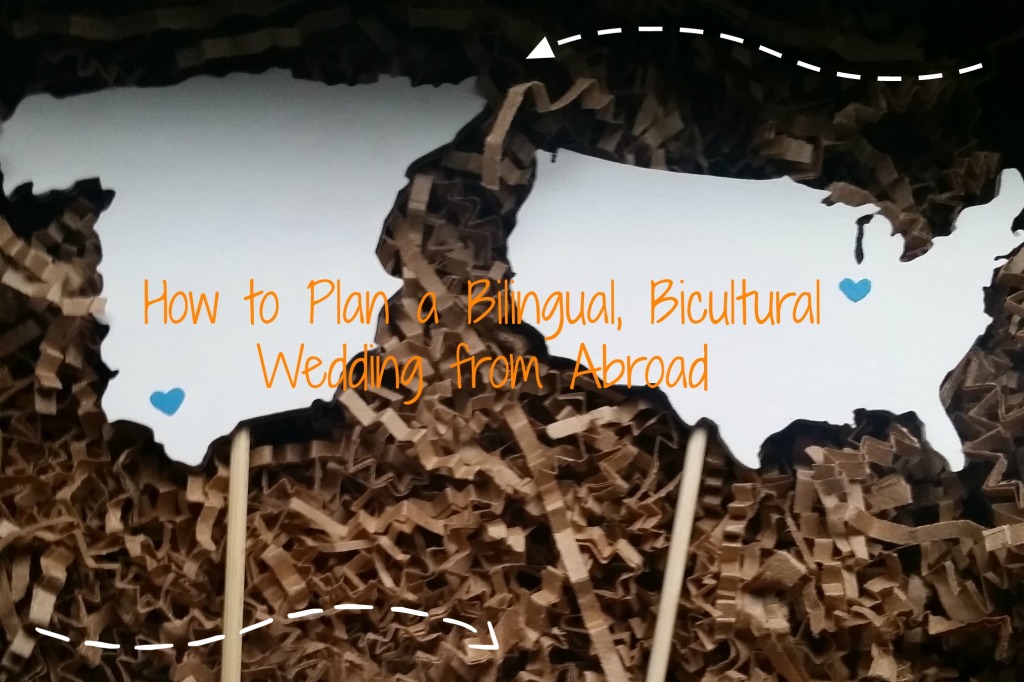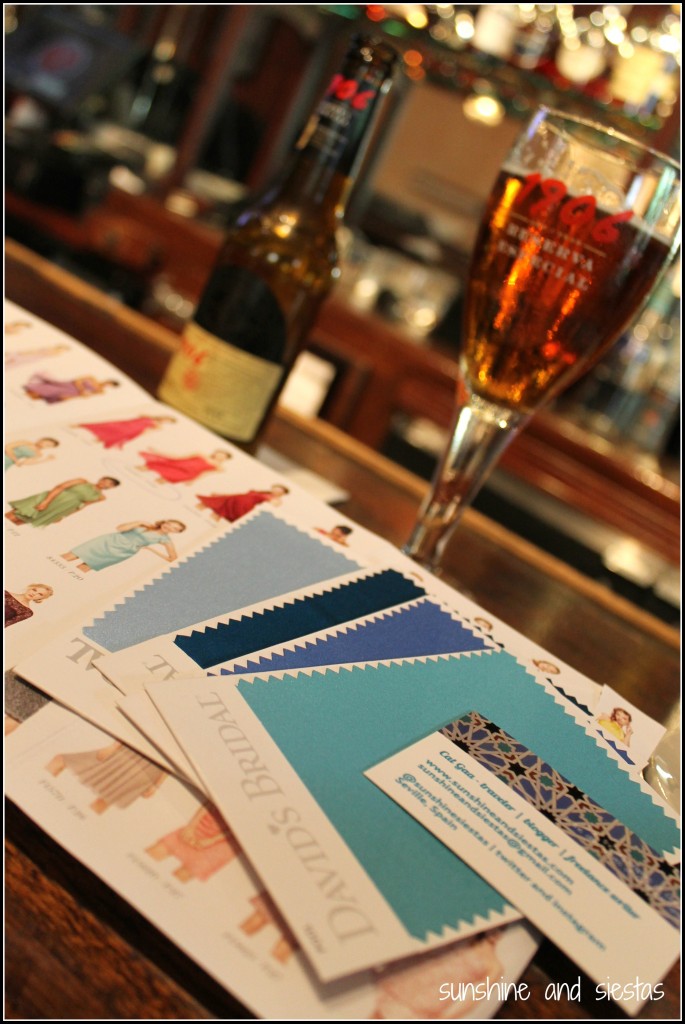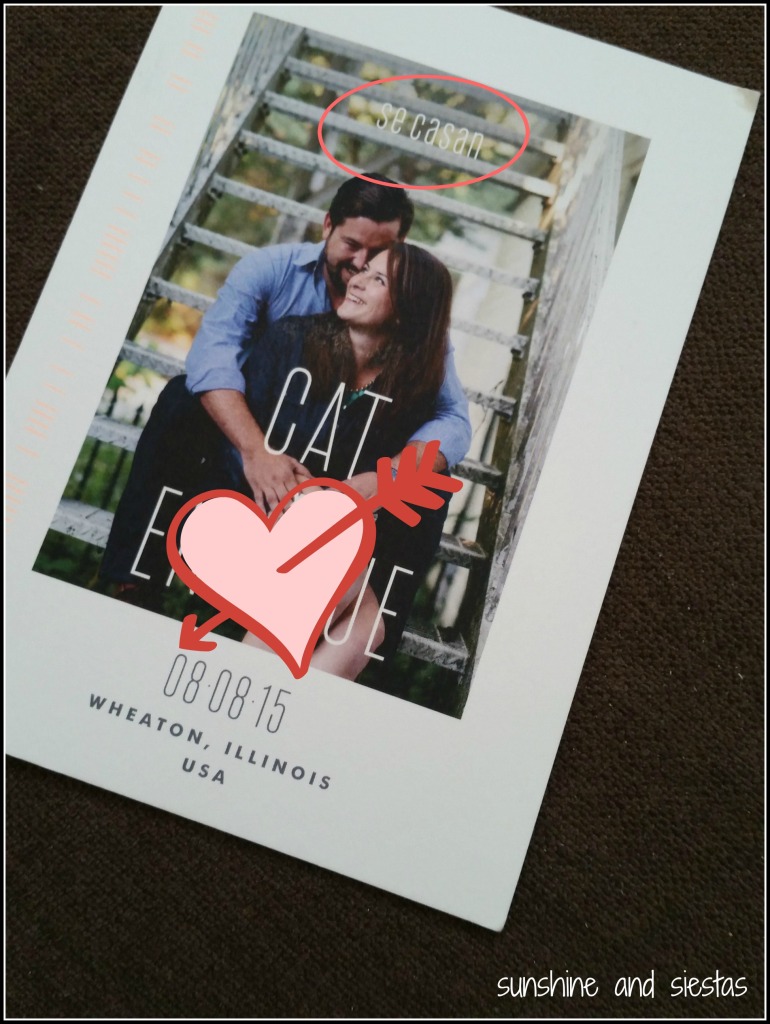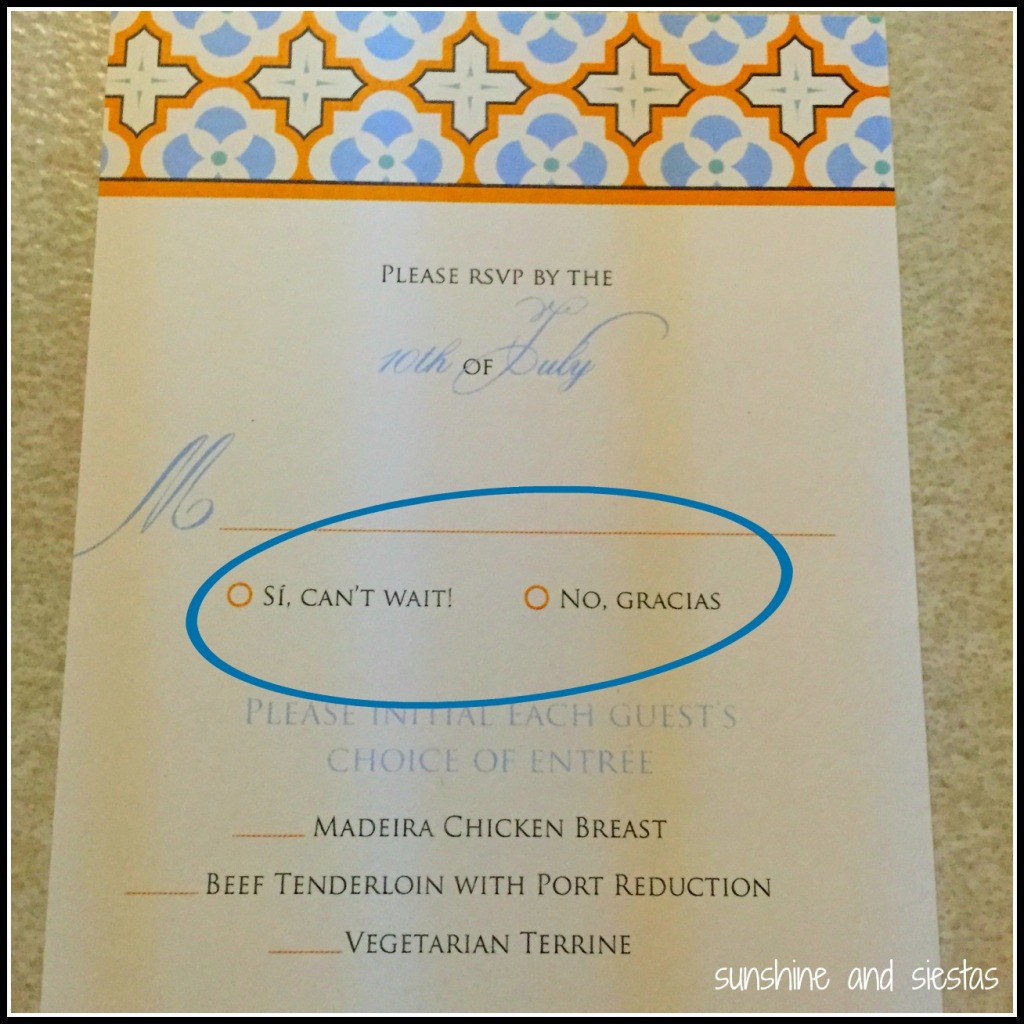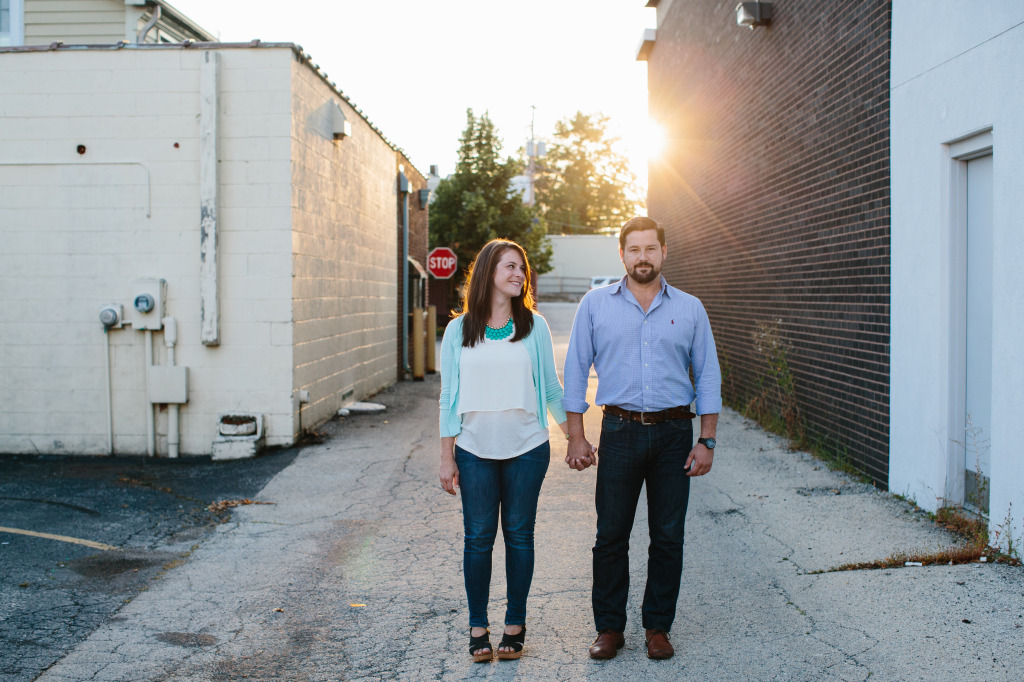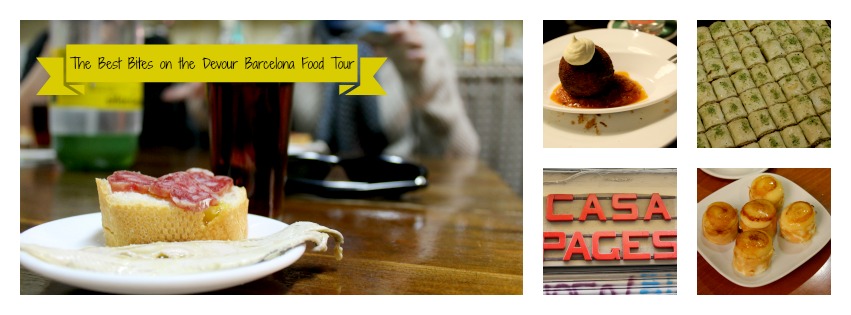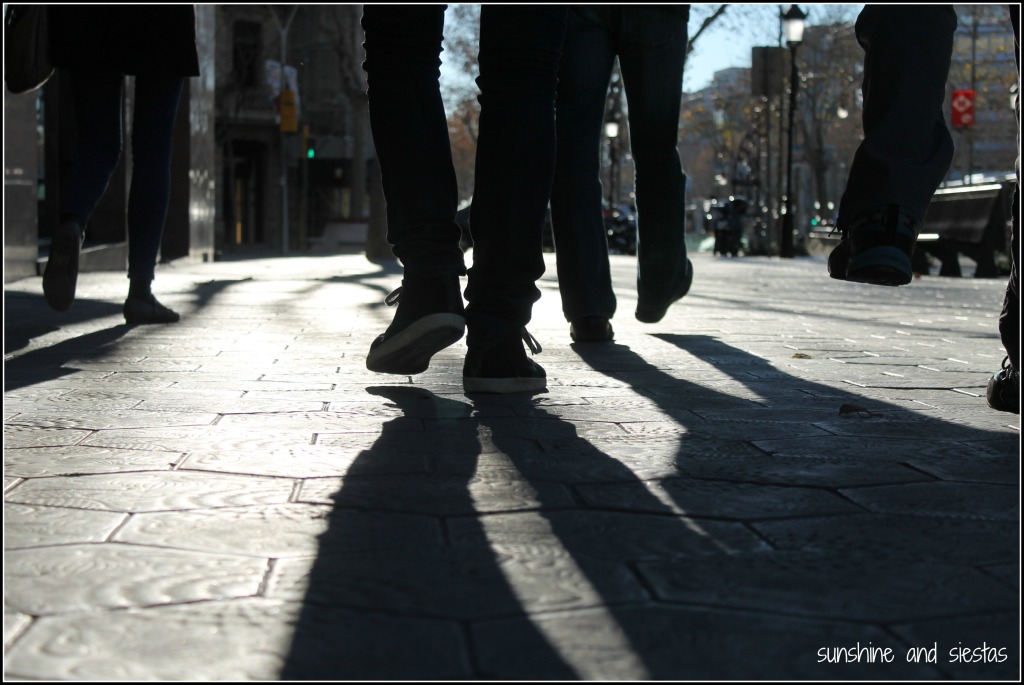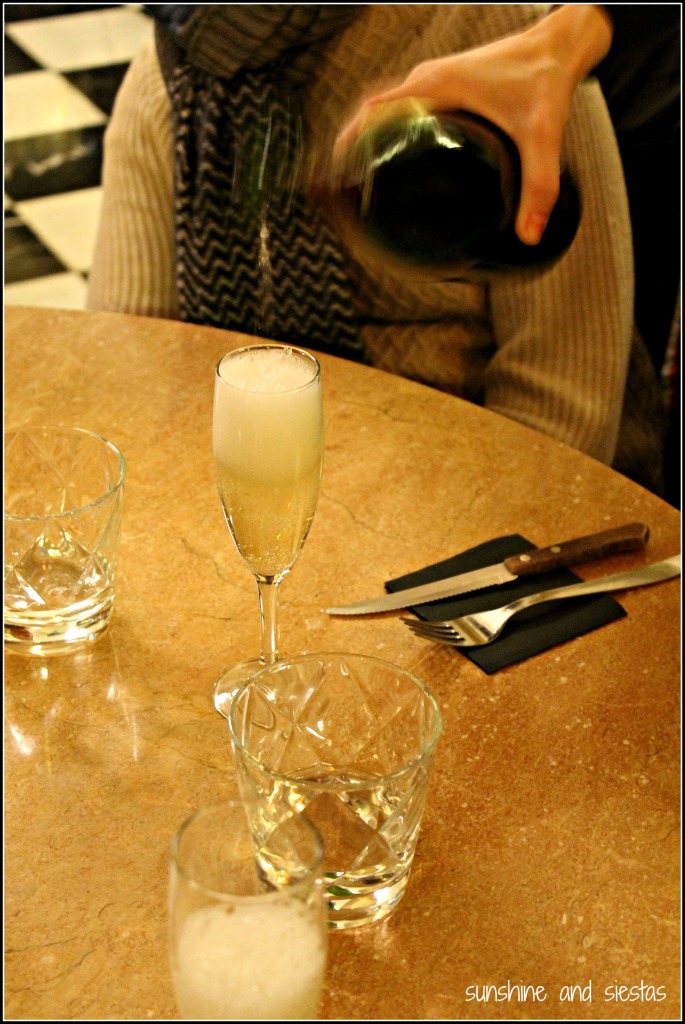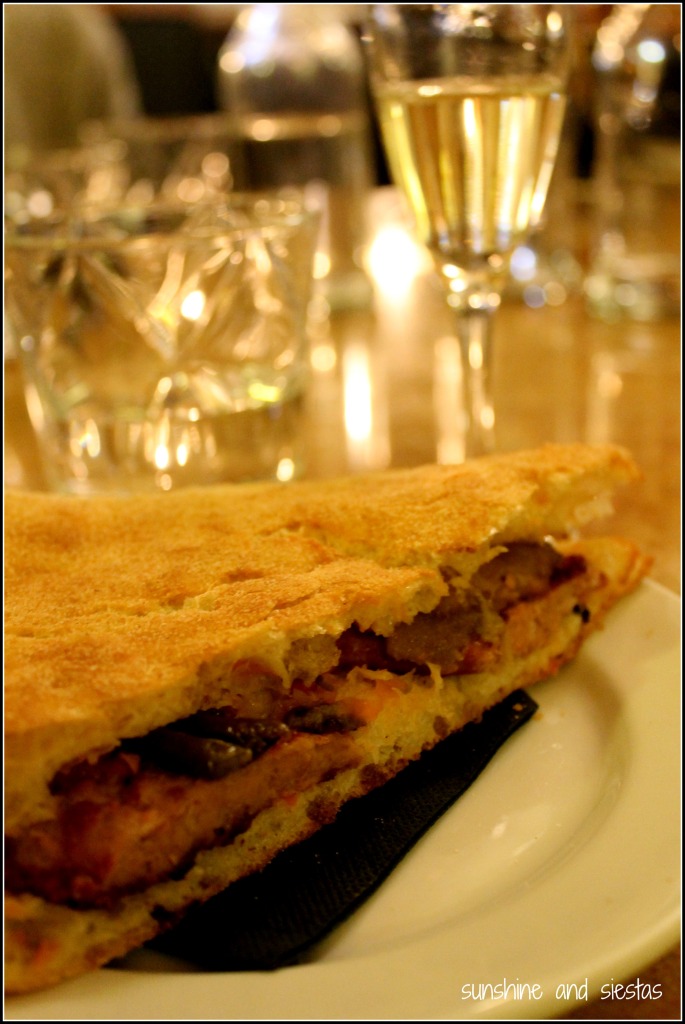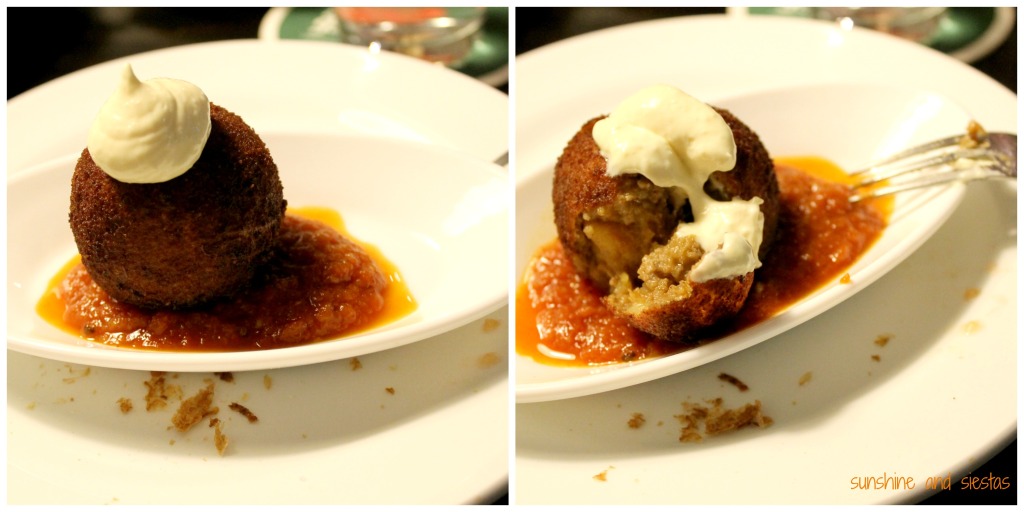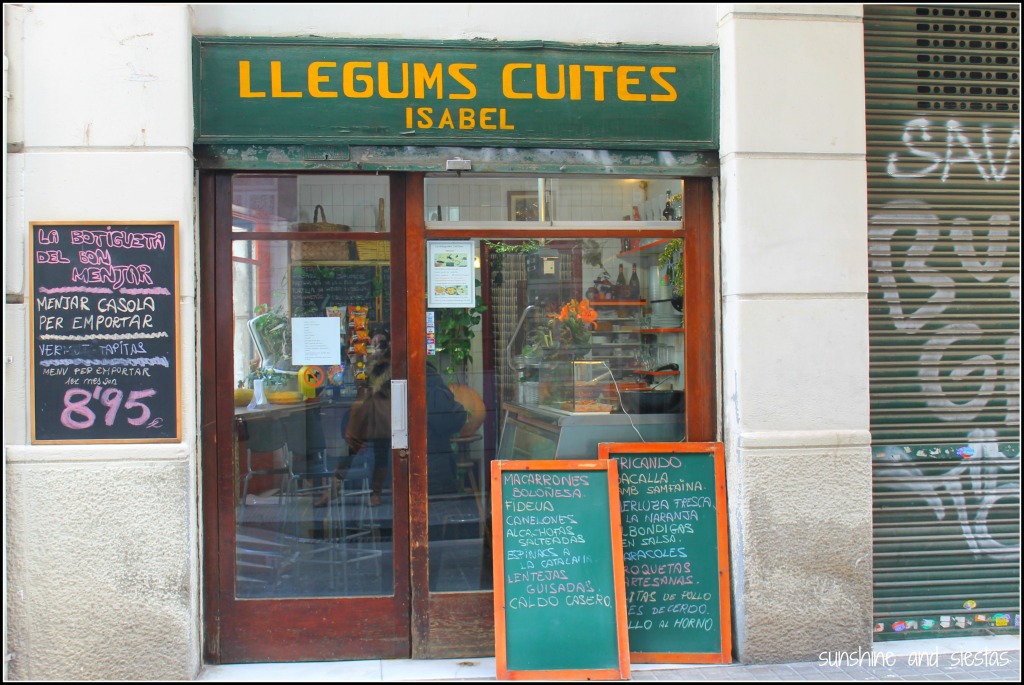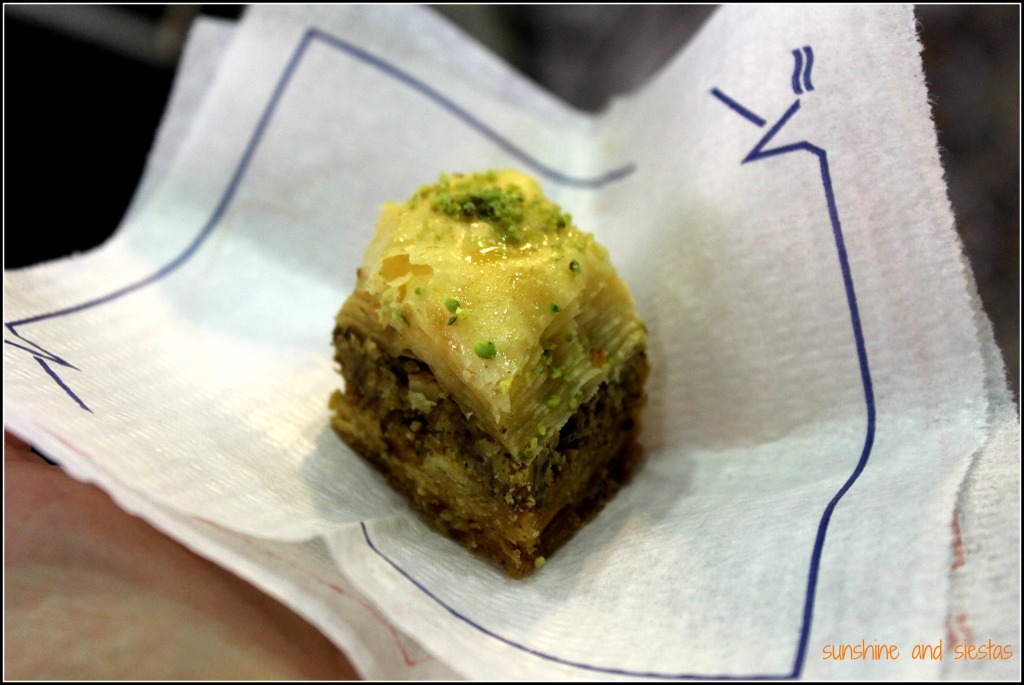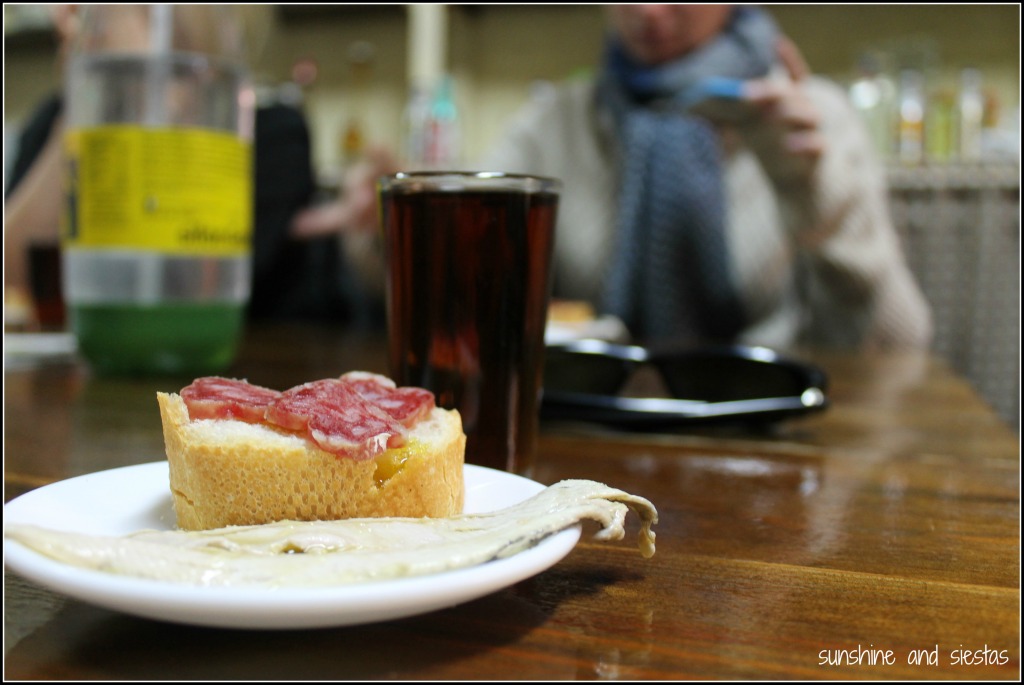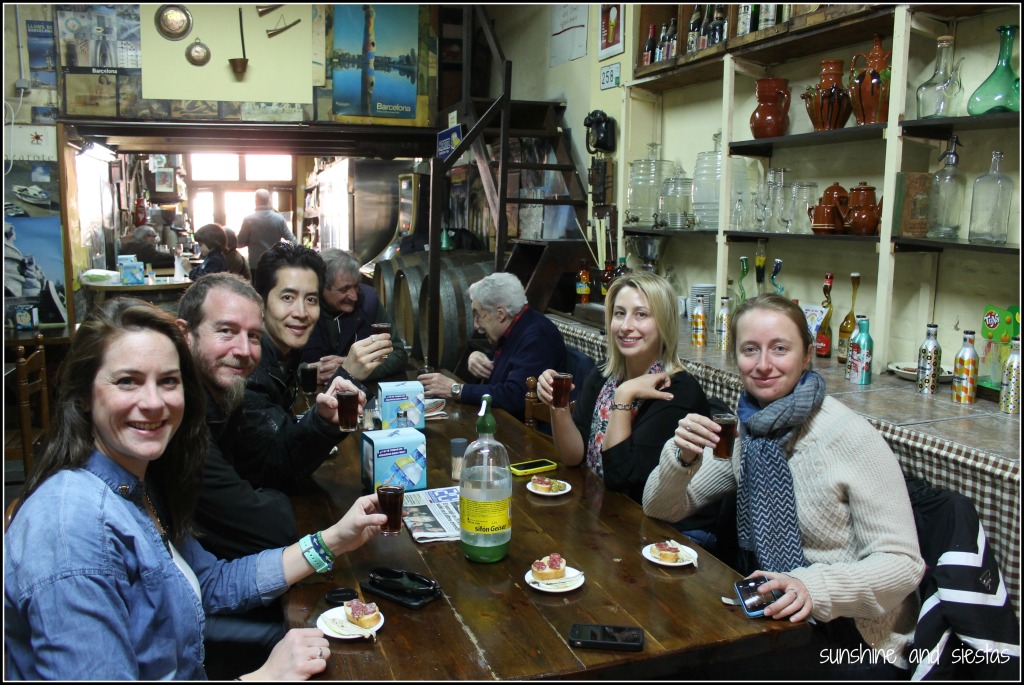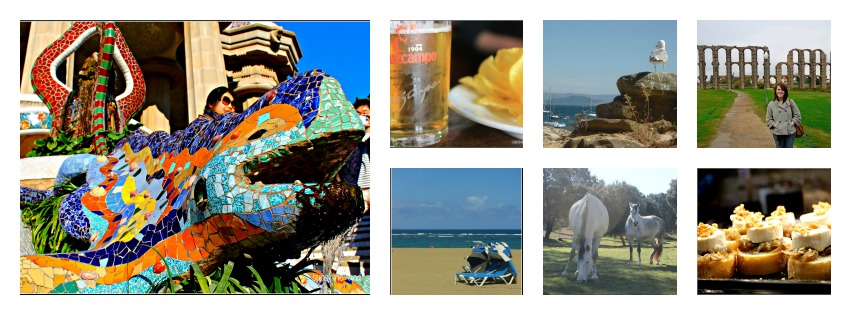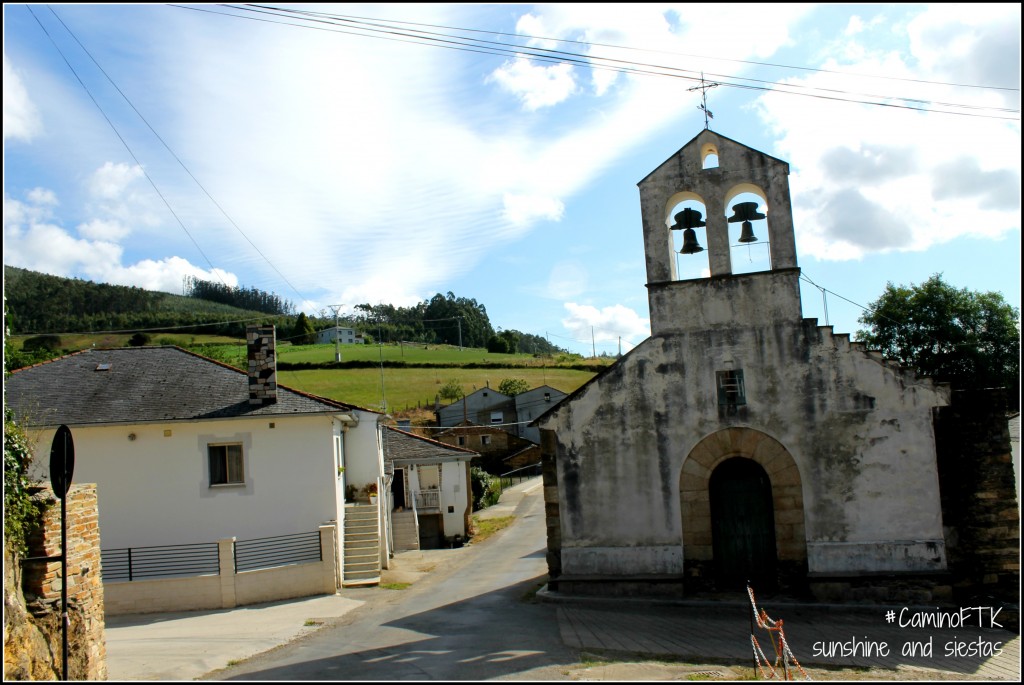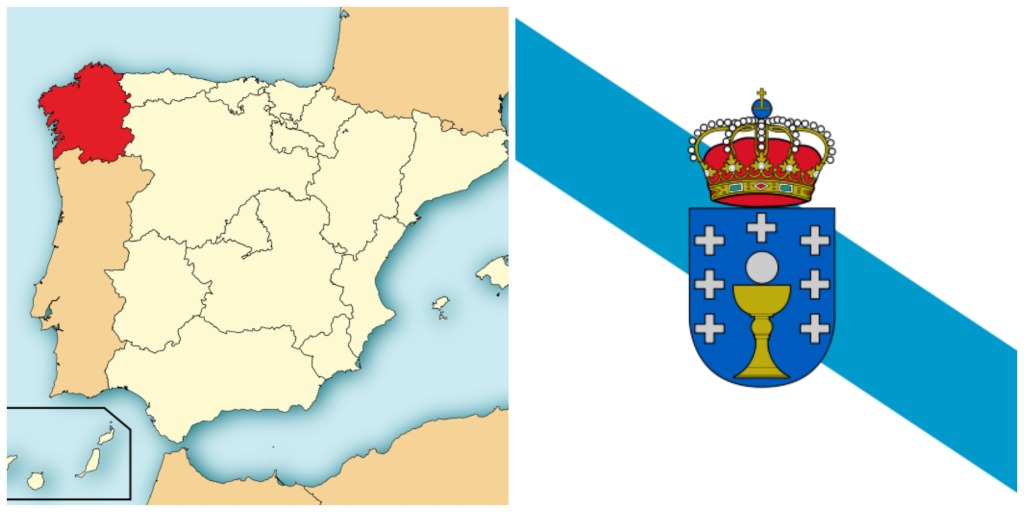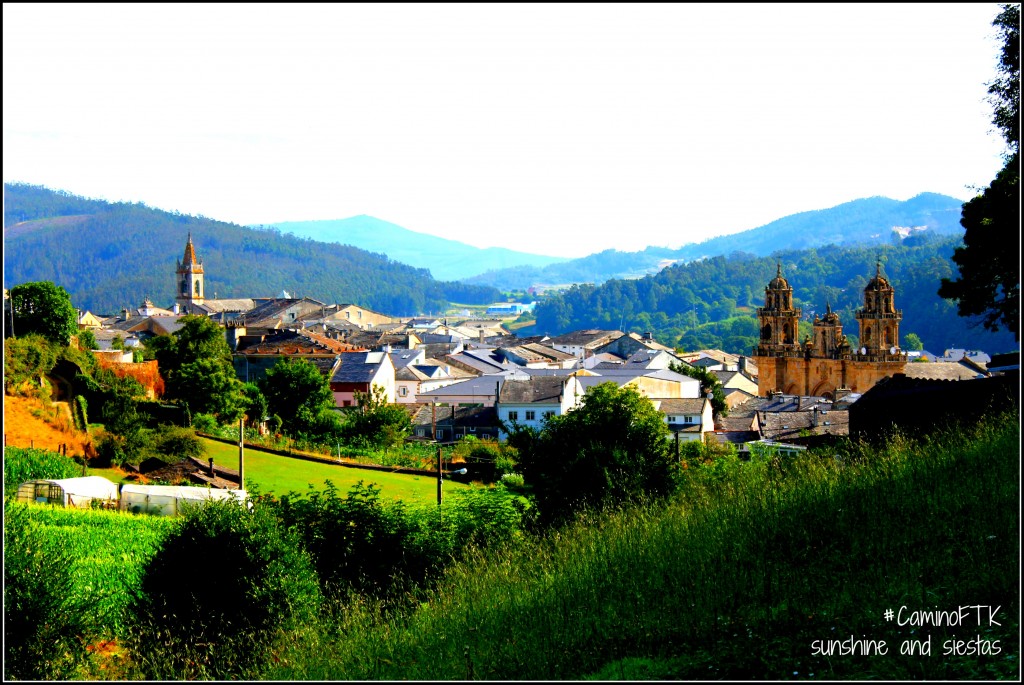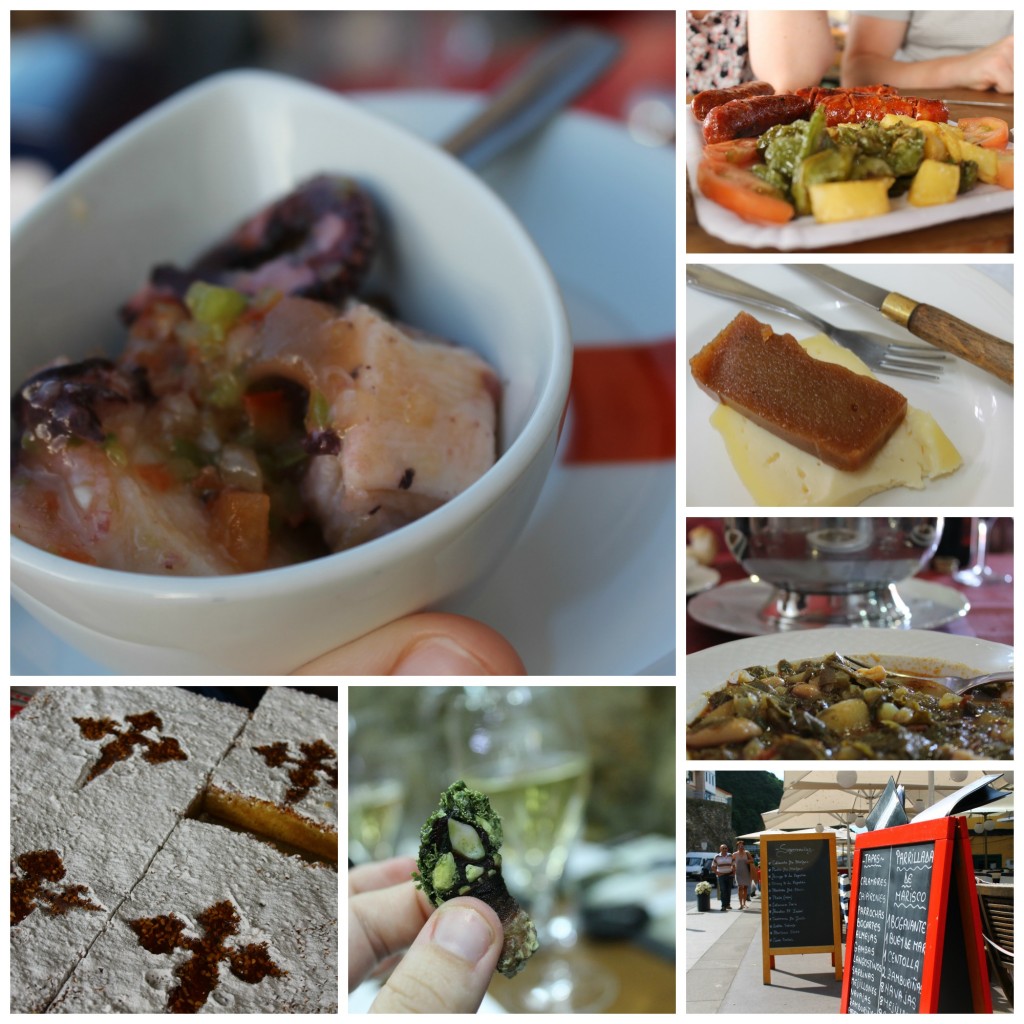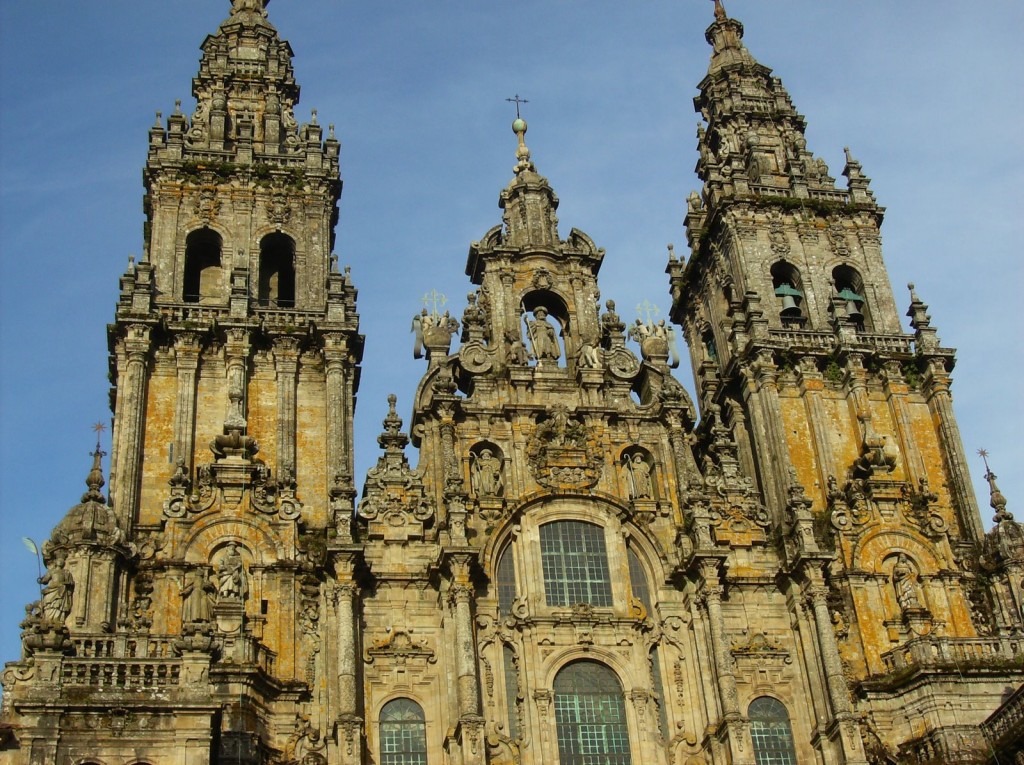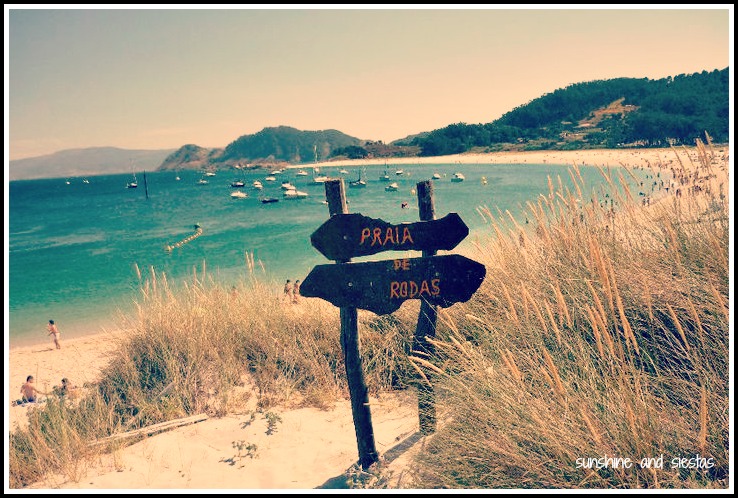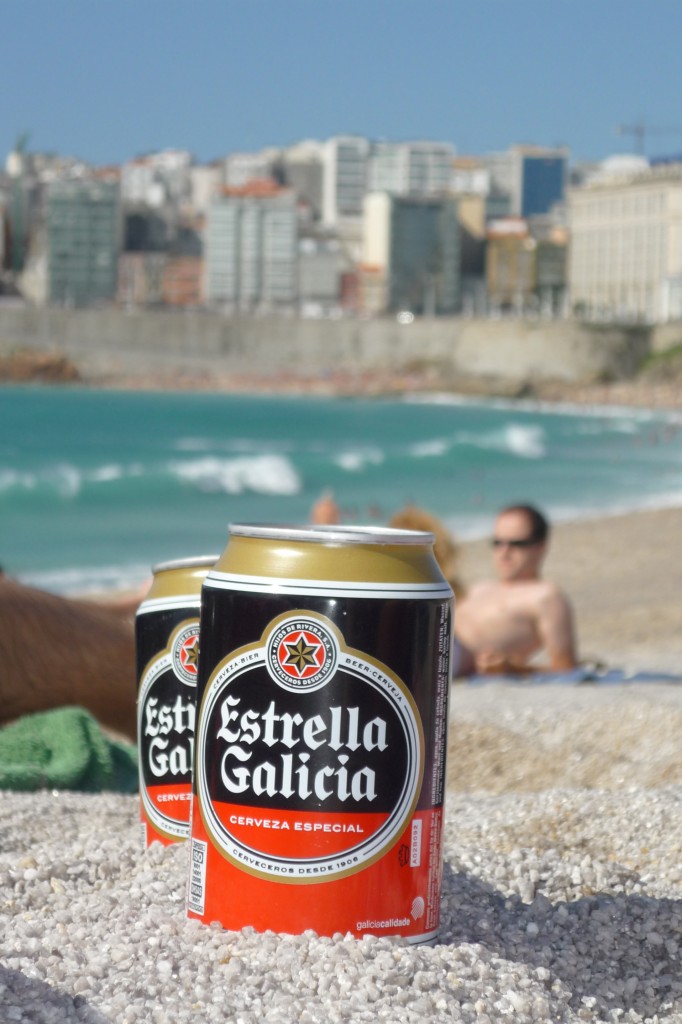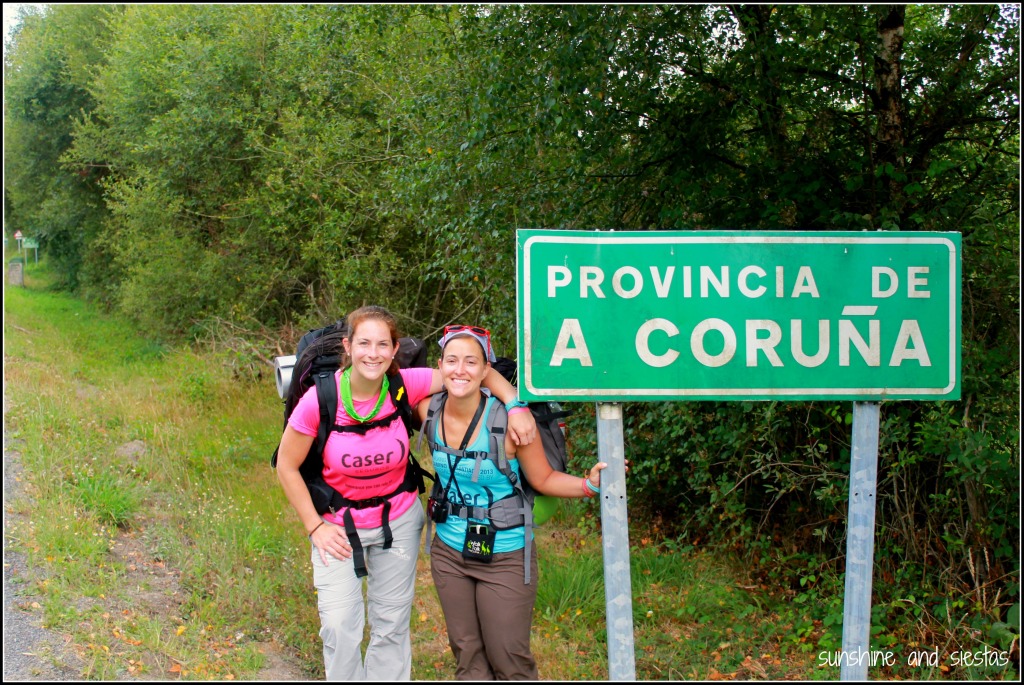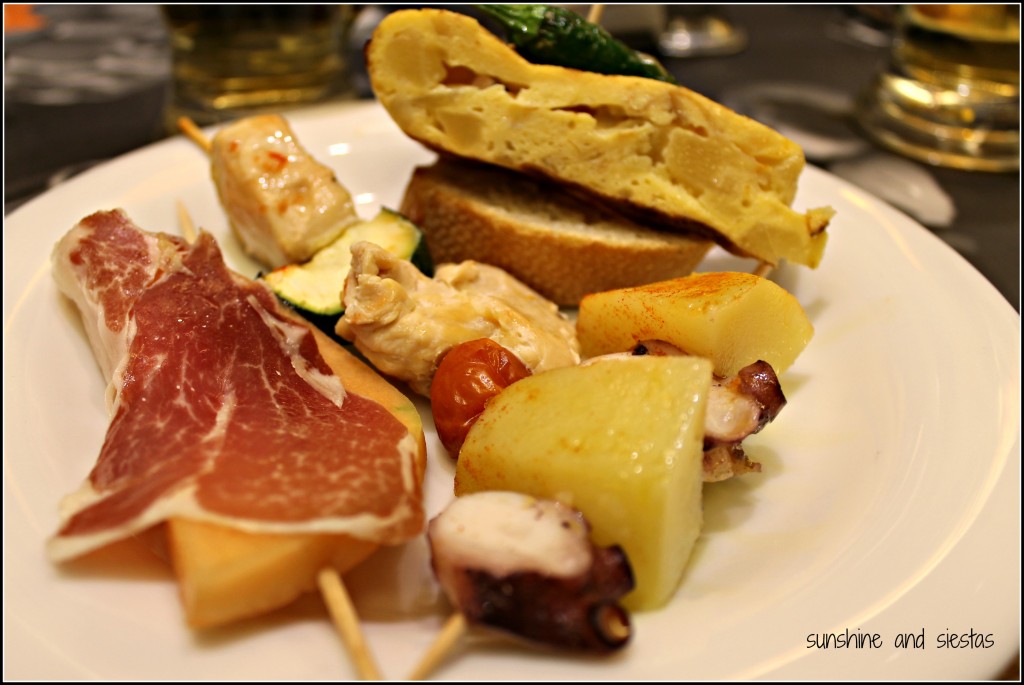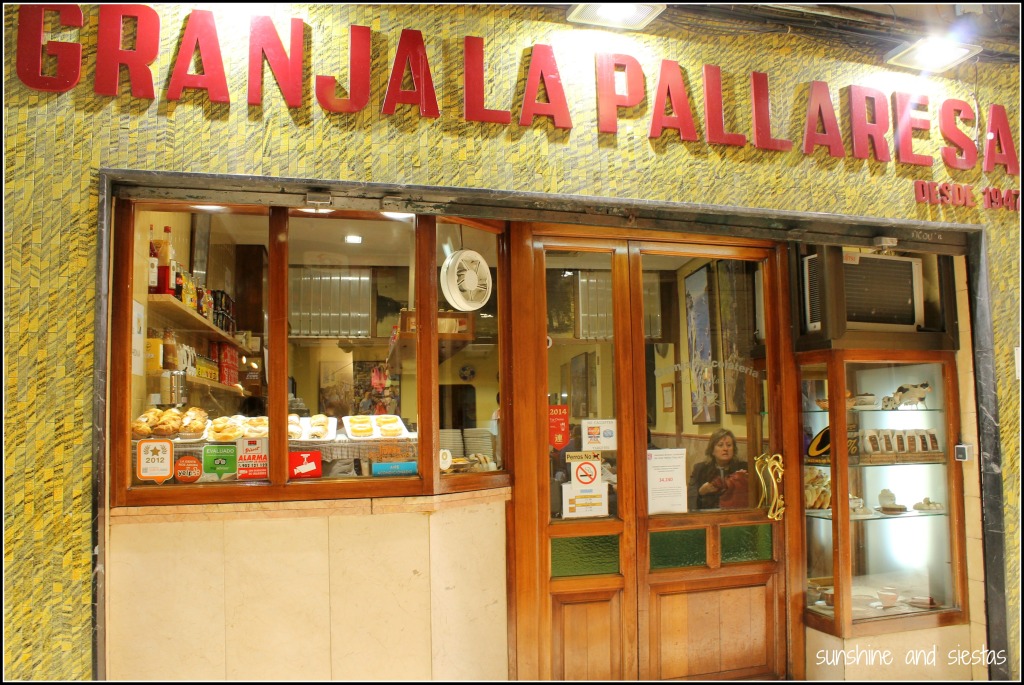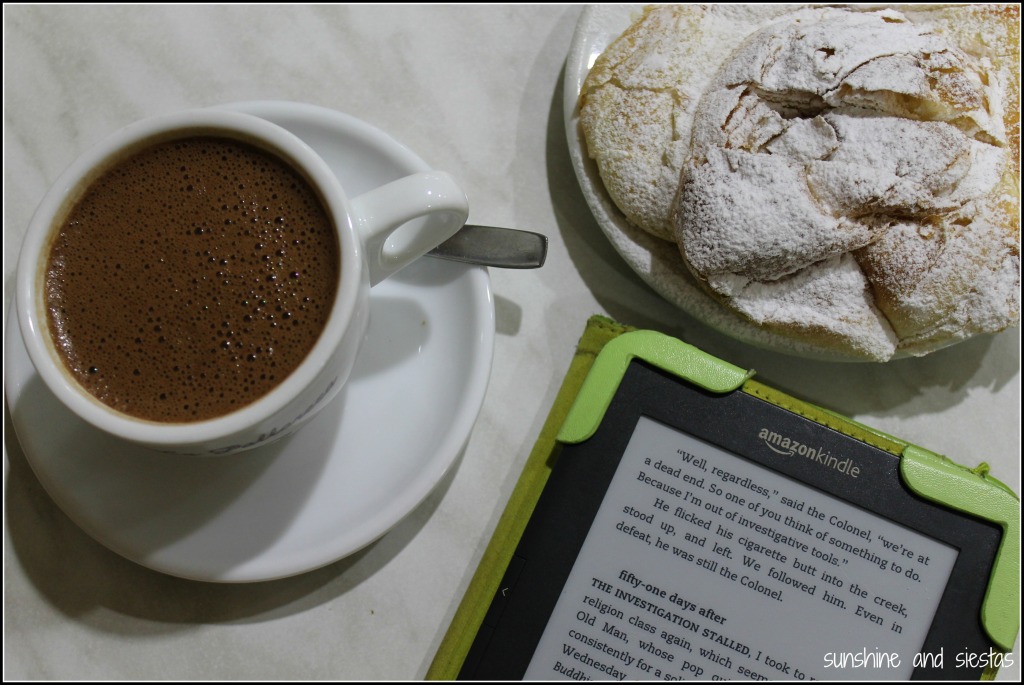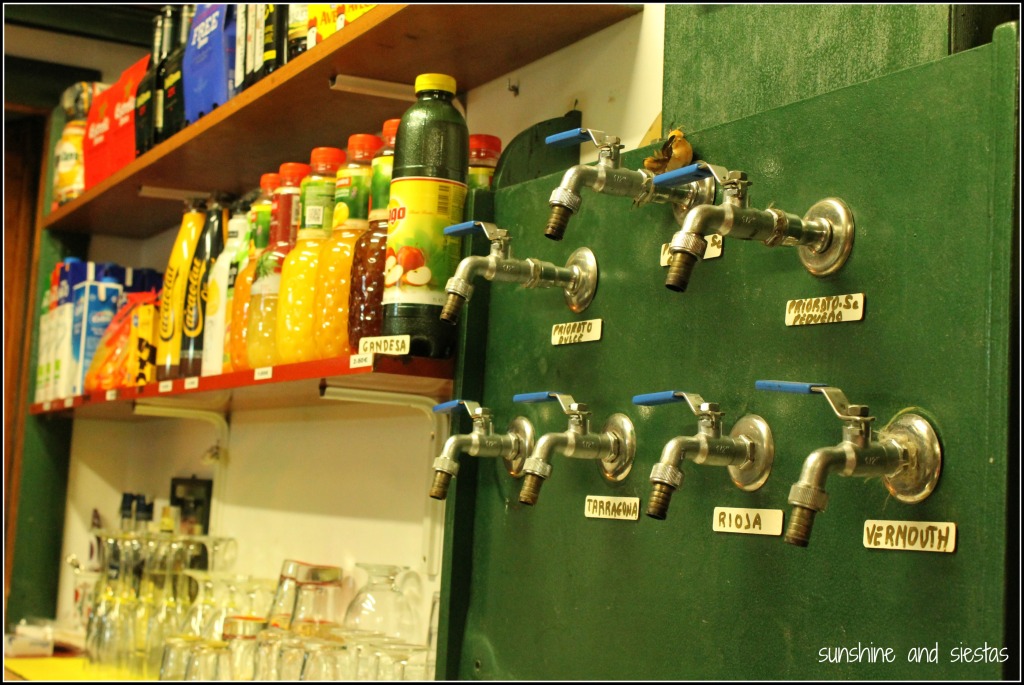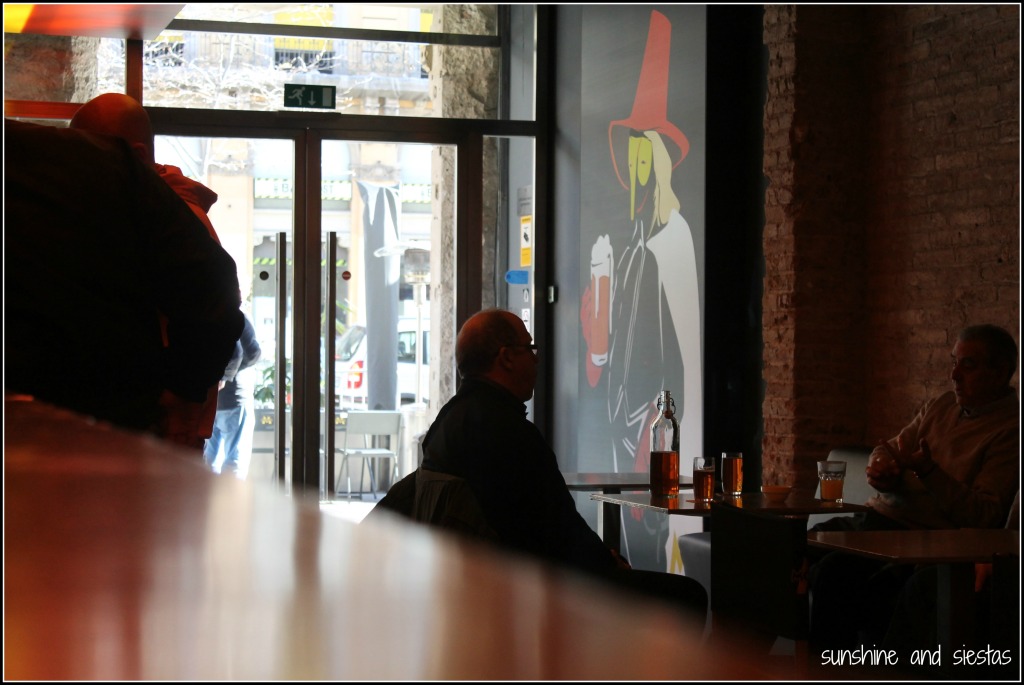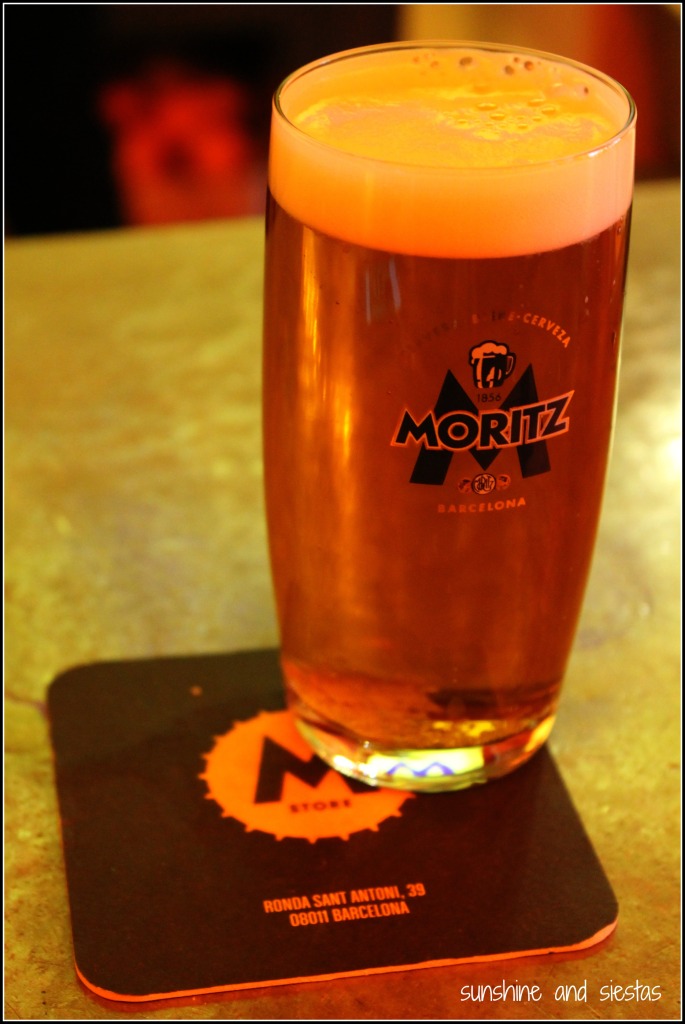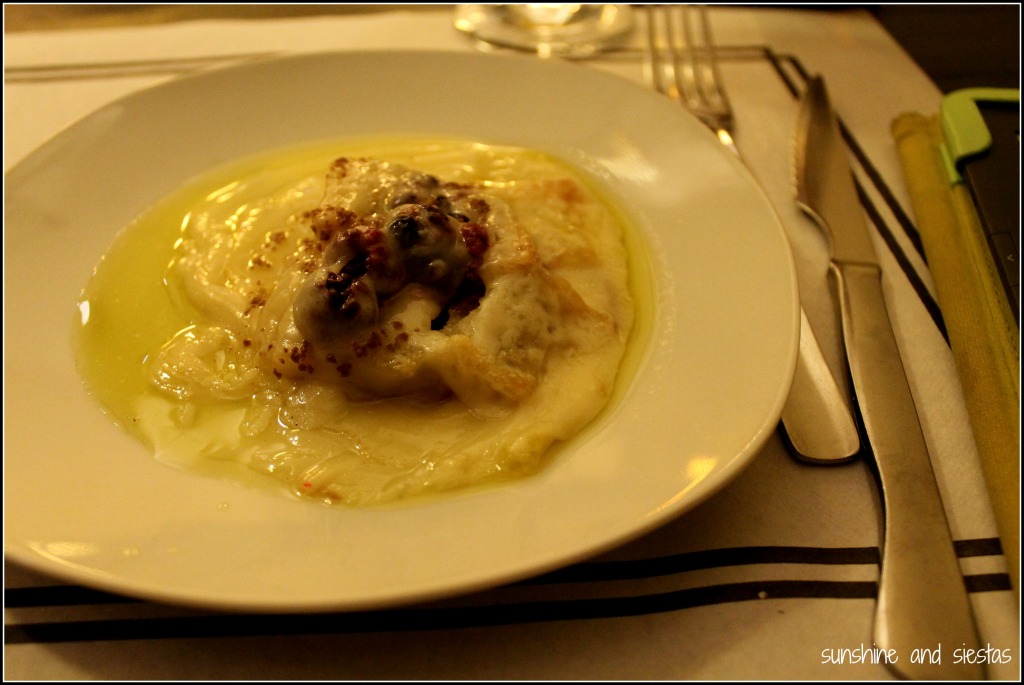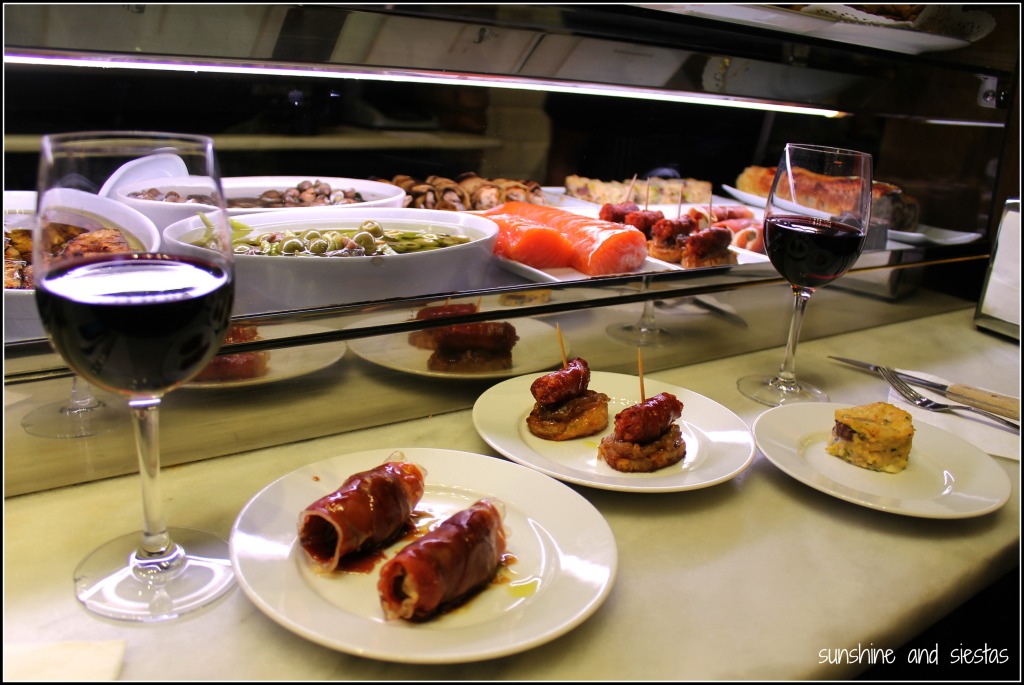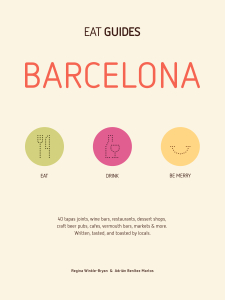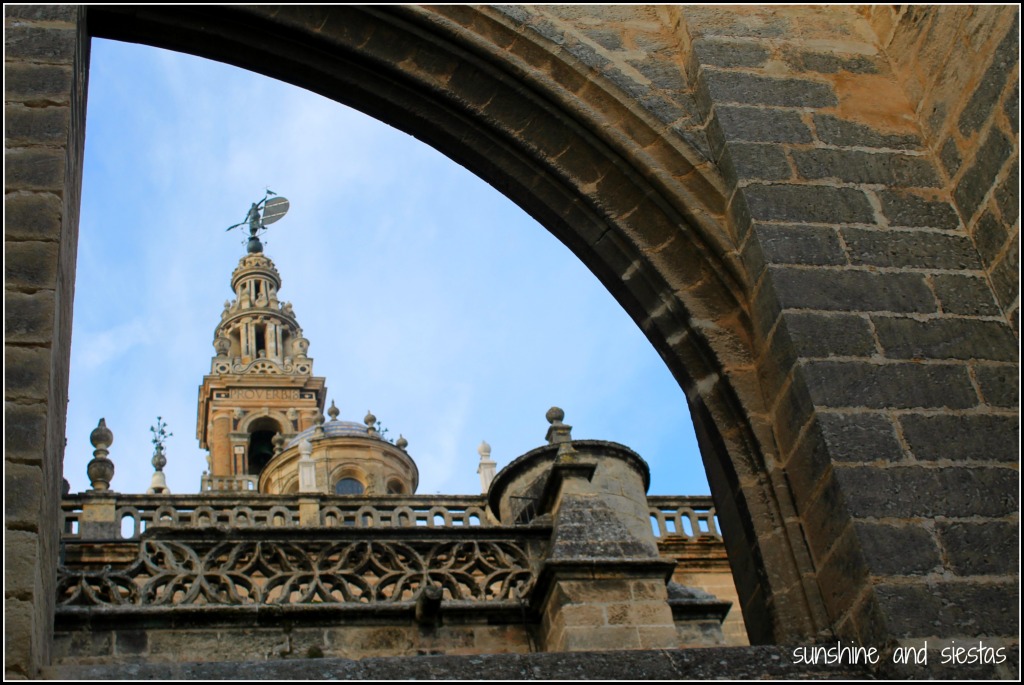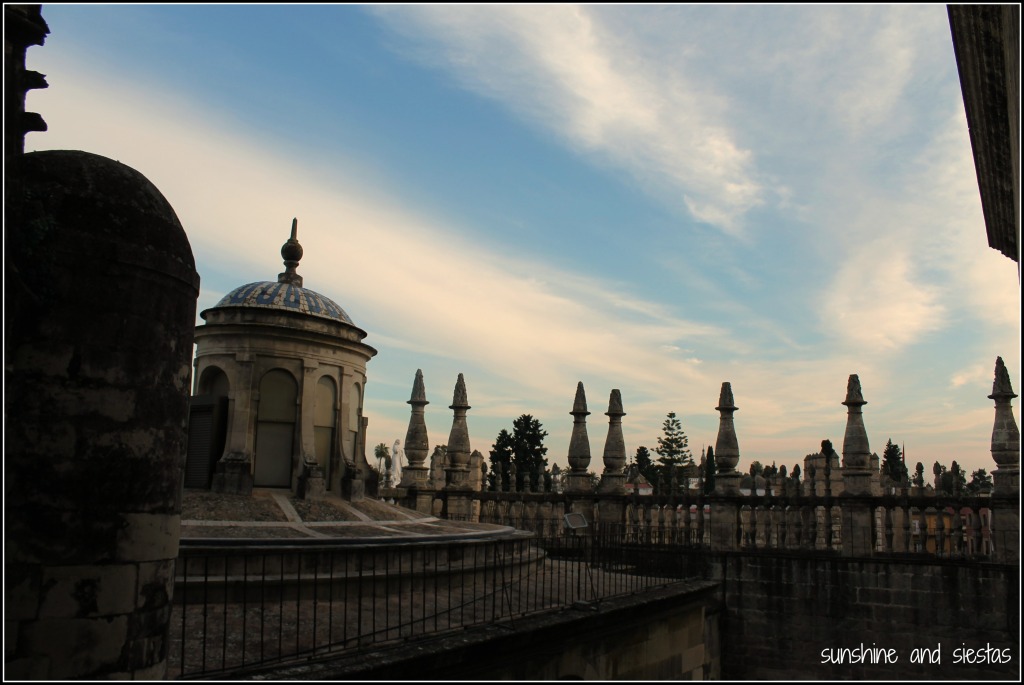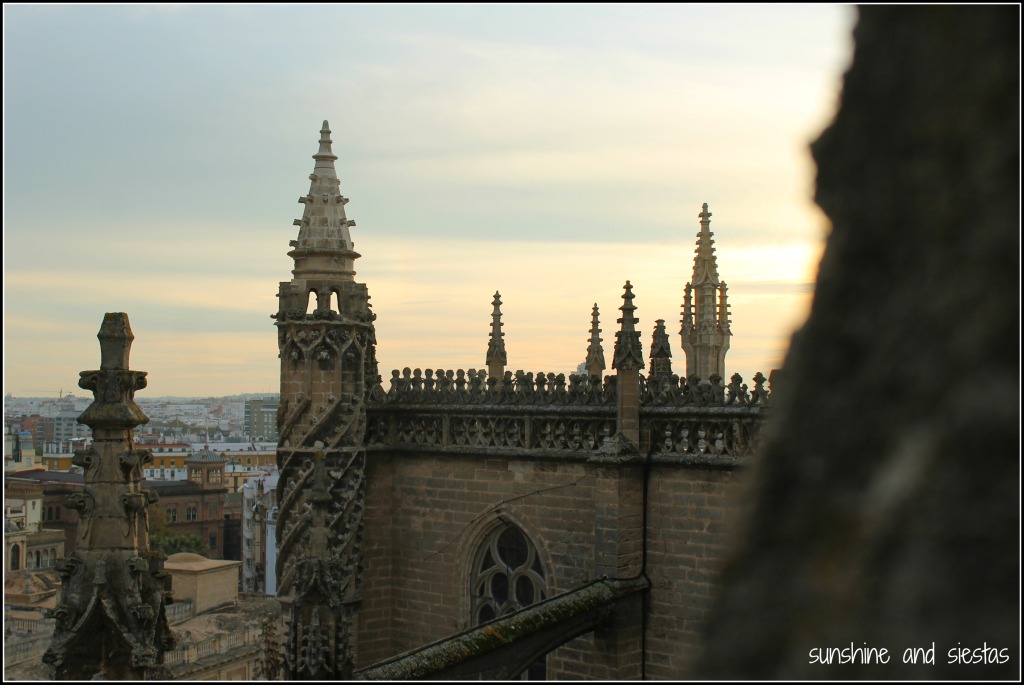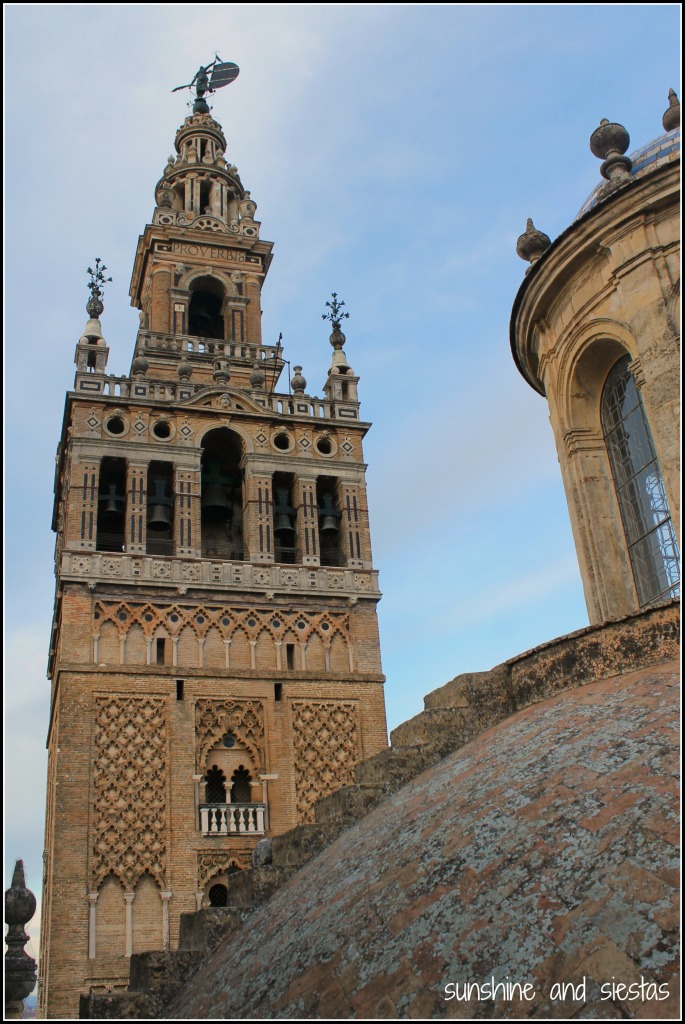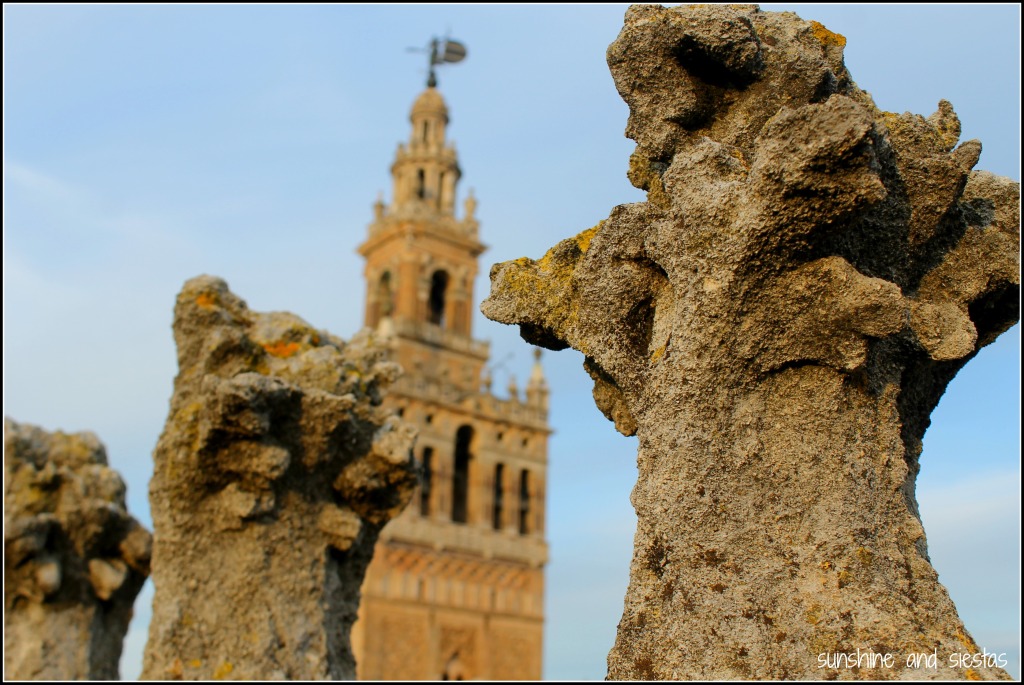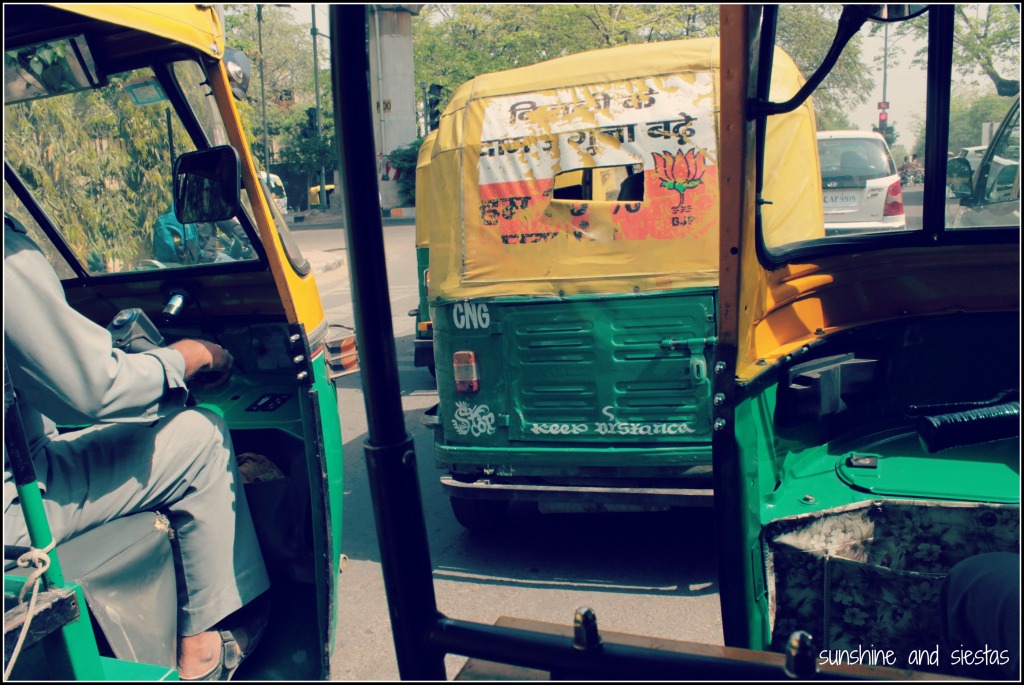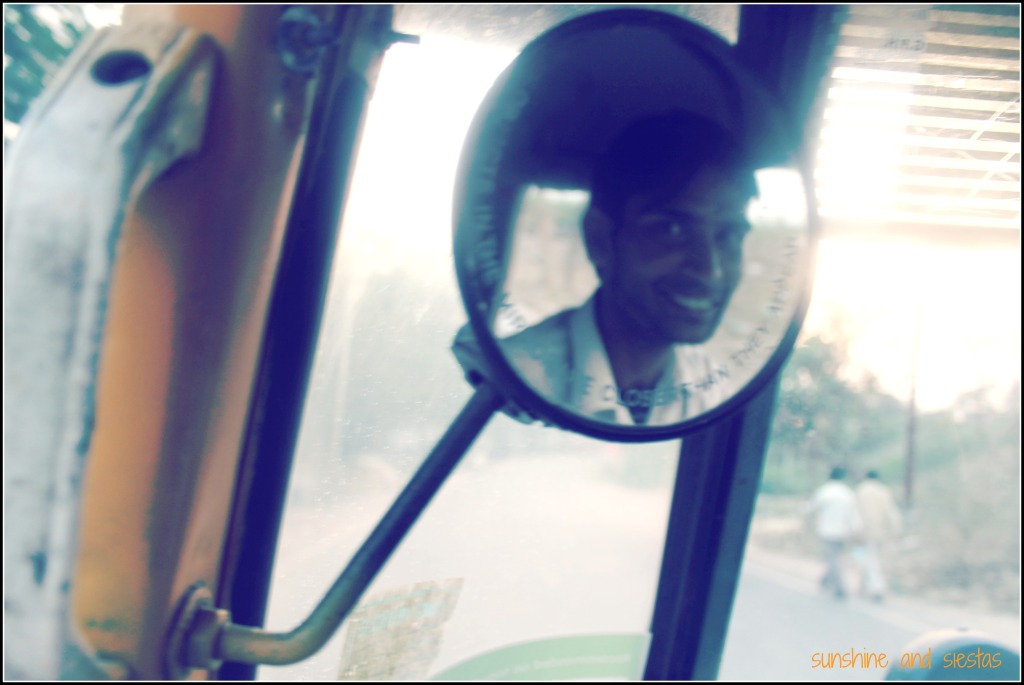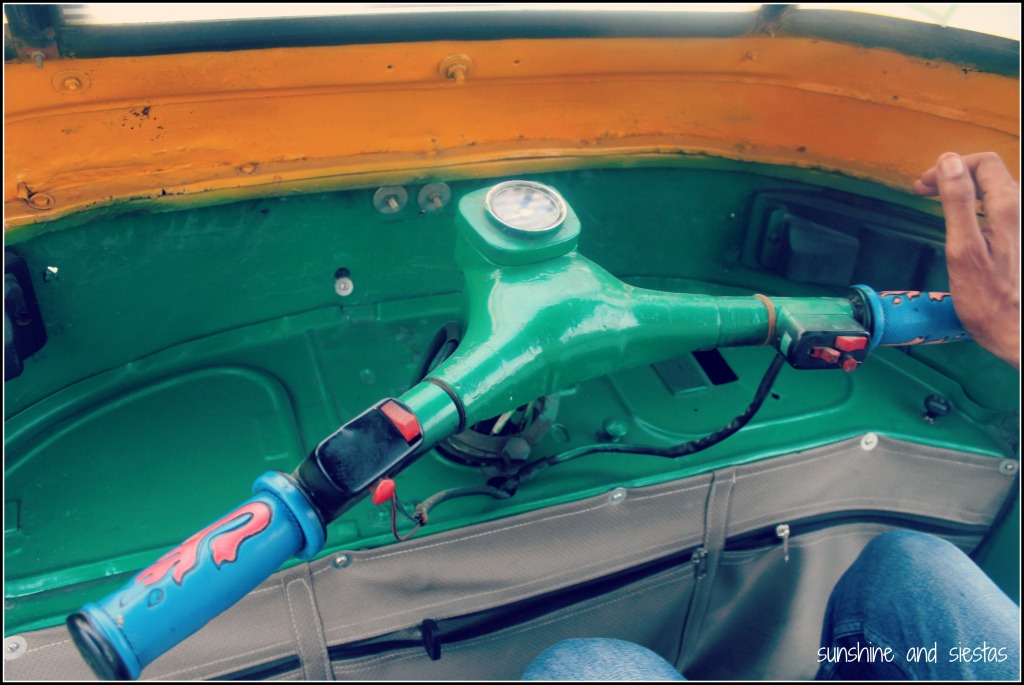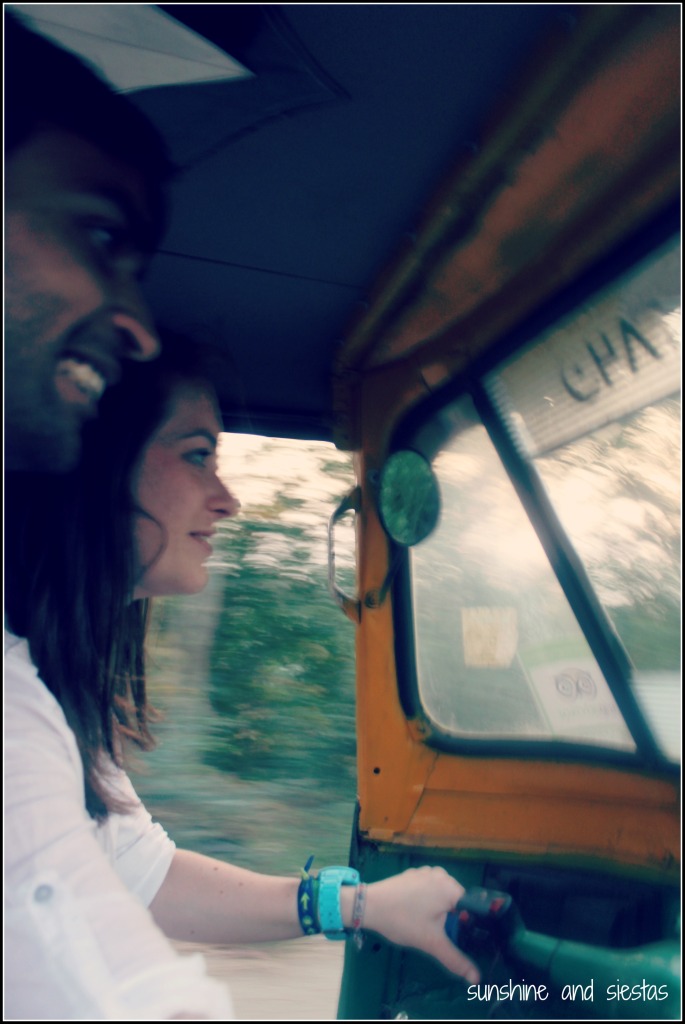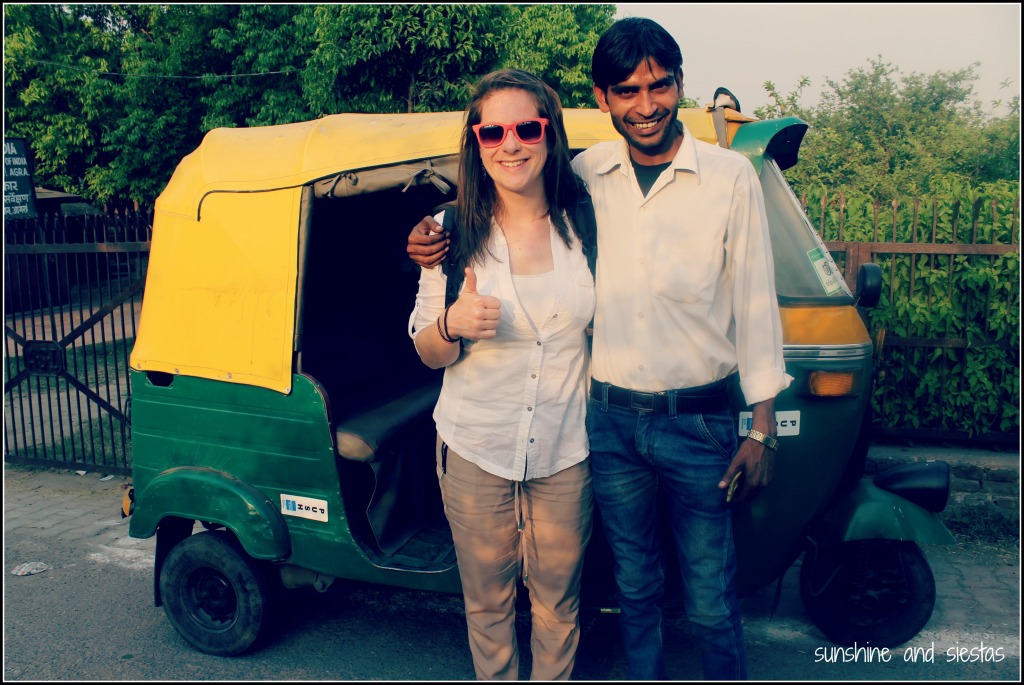I’m going to admit it – my upcoming wedding is bringing out the worst in me. There’s the stress of planning from abroad, coupled with my body changing with the coming of the Second Puberty (otherwise known as turning 30), the bickering and tension with trying to keep both families happy and me in the middle, plus the logistics and the blind faith of letting other people decide details for someone who doesn’t know how to delegate.
Everyone said weddings are work, and I’m realizing that, yeah, that’s an understatement if I ever heard one!
I’m officially down to six months until the sí, quiero. When I chose a date and venue and bought a dress in late July of 2014, August 2015 seemed forever away. So I went about my merry Spanish life, eating jamón and indulging in siestas (kidding, not my real life, and the only difference post-pedido is one more thing in my agenda to do each day).
And then when my sister got engaged at Christmas and started eating a bit healthier, I felt like August was right around the corner, waiting to stick out its leg, trip me and laugh as I picked myself off the floor.
Can I just say that my wedding may kill me?
I keep reminding myself that no one will really remember what they ate (unless it’s terrible or exceptional) or what music the DJ played (unless it’s terrible or exceptional or I convince the Novio to dance sevillanas with me). The most important thing is that we’re there, we’re happy and we’re ready for what comes after the party.
But we’ve still got to get there.
Distance
By far the biggest challenge to the wedding madness is the distance – I’m living in Seville and planning a wedding in Chicago (6,731 kilometers away, in case you were wondering).
I’m a control freak having to cope with letting someone else decide a lot of the details, though giving up said control means does I’m not obsessing over every detail. This has worked out nicely for my mother and her sweet tooth, as it’s them who will be deciding on our wedding cake, and my Travel Ninja dad is working on the logistics, transportation rentals and hotels for our out-of-town guests.
So, planning. Last summer, I spent hours pouring over wedding magazines, calling vendors and venues, and beginning to work out plans for the big day. I was never one of those girls who dreamed about getting married one day, so I was literally staring with zero ideas, except knowing who I was going to marry. On the way home from the airport in July 2014, we stopped at Jewel and Nancy bought my three wedding magazines. I fell asleep on top of them – THAT was how I felt at that point.
Slowly, plans came together, even if I did do a few things backwards, and when I left for Spain six weeks later, I’d hammered out the big plans, leaving my mom to do the flowers (I sent her a pinterest board with some ideas, and I hate myself for ever typing that) and address US-bound invitations, my dad the tuxedos, and my sister to supervise.

When I chose vendors, I immediately eliminated a few who rolled their eyes when I told them where I lived. Flexibility and email skills were important, as the time difference with Chicago would be killer. One such contact is proving to be less likely to answer me within two weeks (ahem, the church), and I will have to sometimes cancel plans to take a Skype call after work.
Thankfully, I have five weeks of summer vacation to smooth out all of the last-minute details, RSVPs and seating charts. My sister-in-law is in charge of wrangling the Spaniards up and getting them where they need to go on time. Hopefully the day will be enough of a blur that I can ignore the small problems and concentrate on remembering to breathe, eat and smile.
Last Name and Paperwork
Surprise! My last name is not pronounced “gaaaah” but “gay.” Imagine being the new kid in middle school and having your teachers ask you to repeat it time and time again in middle school so they’d get it right.
Yes, that happened, and I couldn’t wait to get married and change my name when I was younger. In fact, my mother told my father on their first blind date that she’s never marry him because of his surname. Thirty-some years on, I’m convinced that she got over that quickly.
Aww, my parents on their wedding day in 1983
Nearly two decades later, who am I to scoff at sexist Bible readings for the ceremony and then go ahead and change my name? I’m not an ultra feminist, but have taken that argument to heart. It’s mine, so why should I have to give it up for tradition’s sake? Not like we’re a normal couple anyway.
In many Hispanic countries, everyone has two last names: first their father’s, and then their mother’s. So if your name is María de Dolores de la Cruz García, de la Cruz is your father’s first last name, García is your mother’s. Imagine trying to write all of that at the top of a standardized test.
I’d gotten so used to using my middle name to fill out paperwork that when signing up for things like bank accounts and supermarket discount cards, I’d put my middle name as my first last name. My name was wrong on my paycheck stub for an entire year, despite my pleas to change it, lest I lose years towards retirement.
The whole name change thing makes my head spin. Apart from changing my email nick, I’d have to change my US-issued passport, driver’s license, social security as a start. In Spain, it’s about the same, though the process is bound to be arduous.
photo by Chrystl Roberge Photography
At the moment, I’ve decided to stick with Gaa and bring a whole new generation of guiri descendants to Spain. I do have to renew my NIE, passport and US license within eight months of another, so I could change my mind. Regardless, my middle name and the Novio’s surname begin with the same letter, and Catherine M Gaa could totally pass for both.
The Novio’s solution is simple: convert my surname back to its original Dutch form, lost and subsequently butchered when my ancestors immigrated to America: Van Gaal.
Priest and Traditions
When I first arrived to Chicago, my first order of business should have been contacting the church where I did my confirmation to check availability and book a date. I went ahead and scheduled appointments to see venues and find a wedding dress first because, priorities (and my sister was in town from Texas).
I was hesitant about whether or not to get married in a church – not because of religion, but because one usually be a part of the congregation. What saved me from questions was that I’d done a sacrament and that my dad is active at Saint Mike’s, and August 2015 was wide open.
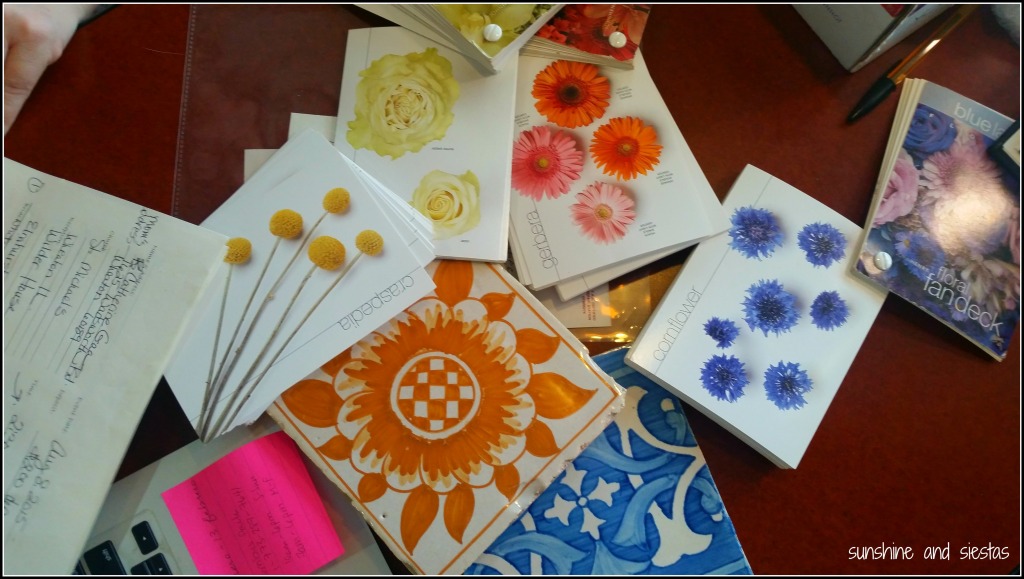
As Catholics, we’re required to complete a pre-marriage course called a pre-cana. In the archdiocese that my church belongs to, this is a weekend-long event to the tune of $250, plus subsequent sessions and attendance at mass. But Father Dan gave us the go ahead to do the course in Spain since we live here and communicate in Spanish – in fact, he even offered to do the course over Skype with us! I assured him we’d find a course in Seville, and he told us we’d just need to present a certificate of completion and the Novio’s birth certificate.
Bonus: the curso preboda is free in Spain and less of a time commitment!
With that figured out, we could focus on the ceremony and reception. But first, a primer: while Spanish weddings and their American counterparts are largely the same, there are a few big differences, and they’re causing confusion to the Spaniards (and usually the ones who pleaded that I have a big, fat, Hollywood-style wedding).
If I have to repeat, “There are no rules to what you wear to American weddings” one more time, I may throw up. If someone asks me “por favor can you find a way to smuggle in jamón,” I will break down into tears. Attire and timetables are proving to be more meddlesome than I excepted.
Spanish women wear short dresses and fascinators at day weddings, and long dresses to night ceremonies, so imagine the confusion with the ceremony at 2:30pm and the reception at 5:30. I don’t care, so long as you don’t come in jeans. This is also appropriate:

And when will the Spaniards eat?! I may be up the night before my wedding making ham bocadillos for them to chow on between the ceremony and reception, and because we’re getting kicked out at 11pm, we had to look for a place for an after party and serve more food to soak up the liquor from the open bar. Because of this, we’ll be buying our own alcohol based on estimates from the caterer, yet one more pre-wedding task (but one that means I’m not stuck drinking Michelob). Our menu is pretty American, but with a few Andalusian twists. Y punto. No 12-hour gorge fest.
We’ve also opted for a wedding party, so I’m coordinating tuxedos with the three Spanish groomsmen living in three different cities. My American bridesmaids are all set to go and will even be sporting a few Spanish fashions, but not having the mother of the groom as the official witness did mean some feelings got hurt. The solution is letting her accompany the groom to the altar.
The matter of a registry was also a pain. In Spain, most couples receive money, either to a joint bank account before the wedding or in an envelope between dinner courses. While my family scoffed at the idea of giving us money, it’s what we prefer because we’ll be making our home in Spain and don’t want to cart gifts back on an airplane. In the end, we decided to do ZankYou, which is an online registry available in both languages, and where we can choose to buy the items or pocket the money. Our house has the basics, but we’d rather not jump the gun and buy something we don’t want.
The ceremony has yet to take shape. Unfortunately, Catholic tradition is pretty rigid, so we’re still unsure about how much wiggle room we’ll have. I’d have loved our exit song to be a heavy metal ballad played on strings, or something a bit more nosotros, but we picked our readings blindly and happened to agree on them. Also an easy decision? No mass!
Language
I learned Spanish for many reasons, and one of those was love. The Novio and I speak about 90% of the time in Spanish, with occasional English words mixed in, like, “Estoy muy sleepy.”
How, then, do you plan a ceremony, speeches and the like in two different languages? The reception has a decidedly Spanish theme, between azulejo tiles and oranges, but there was no way I’d make two sets of save-the-dates, two sets of programs and two sets of invitations.
Our wedding web is currently in two languages, and the save-the-dates play on easy Spanish words. My bridesmaids also got tiny packets of saffron with a cut-out Osborne bull that said, “Help me with the wedding BULLshit. Will you be my bridesmaid?”
But I’m still puzzled as to what to do for the church programs and have decided that menu cards are totally unnecessary – you choose your entrée people! The tricky part could be the reception cards that will need to come back.
In Spain, invitations are handed out in person just a few weeks before the big day, and everyone is served the same food. This means that all of the extra stuff – the reception card, the RSVP and the extra, self-addressed envelope – is useless and even confusing to a Spaniard. People considered our save-the-dates to be the actual invitation, as a matter of fact!
For this reason, we’ll be sticking a few extra pieces of paper into the envelopes going to Spaniards to explain that they have to return the reply card and to give them our bank information.
The ceremony will likely have one reading in English and one in Spanish, and we’re hoping to speak to a Spanish priest about the verses and refrains used here. I want to have a balance so that the Spaniards don’t feel left out during the service – because you know I’ll have tons of crappy Spanish pop songs and sevillanas at the reception! Speeches are not common at Spanish weddings, though we may ask a groomsmen to do one. We’ve also decided to splurge on a videographer so that family and friends who aren’t able to make the trip can share in our big day.
I’m almost relieved that the church won’t allows us to make up our own vows, because that would open a whole new can of worms. I know my family would like me to do the votos in English, and the Novio’s family in Spanish. My goal? To fill in the language gap with laughter and love. Oh dios was that cheesy.
Timeframe
For me, there was no argument about when to get married – I’d need to work around my work schedule, even though I am entitled by law to 15 days off. Looking at a calendar, we had four Saturdays: July 25th, August 1st, August 8th or August 15th. The 15th was off the table – it’s my 30th birthday.
I had a few things to consider: When could he come? When would be convenient for the Spaniards with their holiday time? What about fares from Madrid to Chicago? And, considering how much I’d have to do before the wedding, which date would give me the most time to prepare before the big day?
photo by Chrystl Roberge Photography
We chose August 8th, as all of the pieces just seemed to line up, both with holiday time and vendor availability. This, of course, caused uproar because of pricey flights from Europe. The Novio gave me good advice: those who want to come will make the effort. Those who don’t – that’s one less person to coordinate. I rejoice that my partner is so pragmatic, particularly when I get carried away.
I also headed home over the holidays to meet with a florist, have my dress fitted and do a hair and makeup trial, and I’ll be jetting back for a month before the wedding to take care of the last details, including having a shower of sorts and a bachelorette party (bonus! I get one in Spain, too!). July and August have been insane months for the last three years, and 2015 will keep pace.
We’re opting not to take a honeymoon just yet because of other expenses (clearly not my choice!). Japan and Cuba are the top choices, and hopefully a minimoon just before returning to Spain to begin married life.
The Countdown
While many people enjoy the planning process of a wedding, I don’t feel like I’m much a part of the whole thing. The Novio’s been out of town on business for four of the last six months, and I’m not stuffing envelopes with my bridesmaids. The light at the end of the tunnel is being husband and wife and able to share our love and future with our más queridos. So for every headache, there is something to look forward to in the future.
photo by Chrystl Roberge Photography
People have asked me if I’m nervous to get married or to stay in Spain for life. The Novio and I have been pretty serious since we first met, so the answer is no. We also did the very Spanish thing of dating for a bajillion years before getting engaged, so his feeling on the matter is, “I’ve learned to live with your caprichitos, and I’m old enough to know what I want and who I want.”
So glad we’re sticking to traditional vows!
